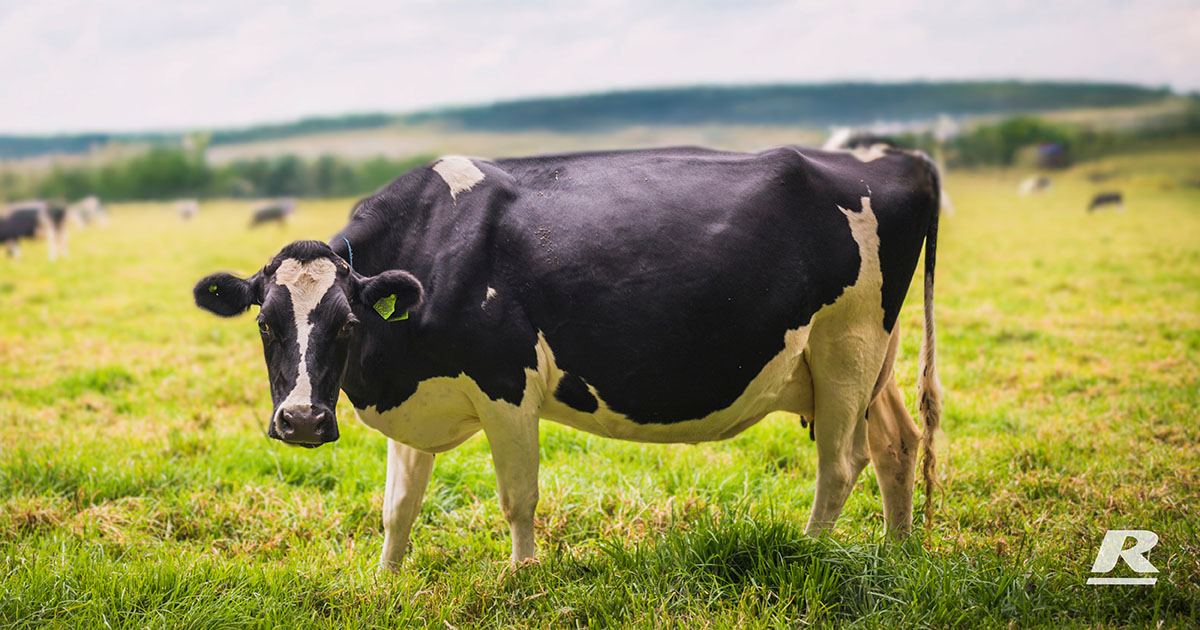During the first thirteen weeks after calving, a dairy cow performs like an elite athlete: she maximises nutrient intake, ramps up milk synthesis and, at the same time, must reactivate her reproductive system for the next service. In this short window, every percentage point of fertility is worth its weight in gold—any delay in conception lengthens the calving-to-calving interval, adds days open and erodes the profitability of the entire lactation.

Why does high output compromise fertility?
A vicious circle links production and reproduction. When the cow hits peak milk—generally between weeks three and six—the demand for glucose, amino acids and fatty acids far outstrips voluntary dry-matter intake. A 650 kg Holstein yielding 45 kg of milk a day requires roughly 33 Mcal of Net Energy for Lactation (NEL) yet typically consumes only about 28 Mcal. As documented by Drackley & Cardoso (2014), she bridges that 5 Mcal gap by mobilising body fat and protein—essential for sustaining milk flow but triggering an adverse hormonal cascade in the ovary.
Prolonged negative energy balance (NEB) pushes blood NEFA and β-hydroxybutyrate higher. Persistently elevated levels weaken uterine tone, favour retained foetal membranes and both clinical and sub-clinical endometritis. Follicles then grow in a lipotoxic environment, with reduced steroidogenic capacity and poorer-quality oocytes. The practical result is delayed first ovulation, weaker heat expression and a lower conception rate at first service (Leroy et al., 2020).
Nutrients, vitamins and minerals that make the difference
The first target is to reverse NEB before 45 days in milk. The total ration should supply at least 1.65 Mcal NEL per kg DM and 17 % crude protein. Achieving that density with forage alone is hard work, so rumen-protected fats such as Megalac® or Bergafat® become strategic tools, lifting NEL by 0.20–0.25 Mcal per kg of diet without raising the risk of ruminal acidosis.
Optimal uterine health depends on a robust antioxidant system. Providing 1 000–1 500 IU of vitamin E along with 0.30 ppm organic selenium cuts the incidence of metritis and speeds uterine involution (Lean et al., 2014). At Reid Stockfeeds we include stabilised vitamin E plus the chelated mineral package Availa® 5, whose high bioavailability boosts ovarian hormone synthesis and preserves endometrial integrity.
Functional yeast adds another layer of support. Diamond V® Original XP stimulates fibre-digesting microbes, improves fibre digestibility and lifts dry-matter intake, directly aiding NEB recovery and the resumption of ovarian activity.
Ready to lift your pregnancy rate?
Get in touch with our nutrition team today. Together we’ll design the ration and follow-up protocol your cows need to turn high production into sustainable fertility and profitability.
References (Journal of Dairy Science)
- Drackley & Cardoso 2014 97:5879–5888
- Overton & Waldron 2017 100:7121–7131
- Santos et al. 2016 99:4037–4051
- Leroy et al. 2020 103:10654–10670
- Lean et al. 2014 97:5501–5513
- Diskin & Kenny 2016 99:5933–5944
- Melendez et al. 2019 102:8854–8866
For tailored guidance on enhancing your herd’s nutrition and management practices, turn to the dairy specialists at Reid Stockfeeds. We offer animal feed in both pellet and mash form and are dedicated to empowering you with expert advice to support the health and performance of your cows. Call 1300 REID FEED or enquire here >
 Author
Author
Claudio Diaz
Sales and Nutrition Account Manager
 Author
Author